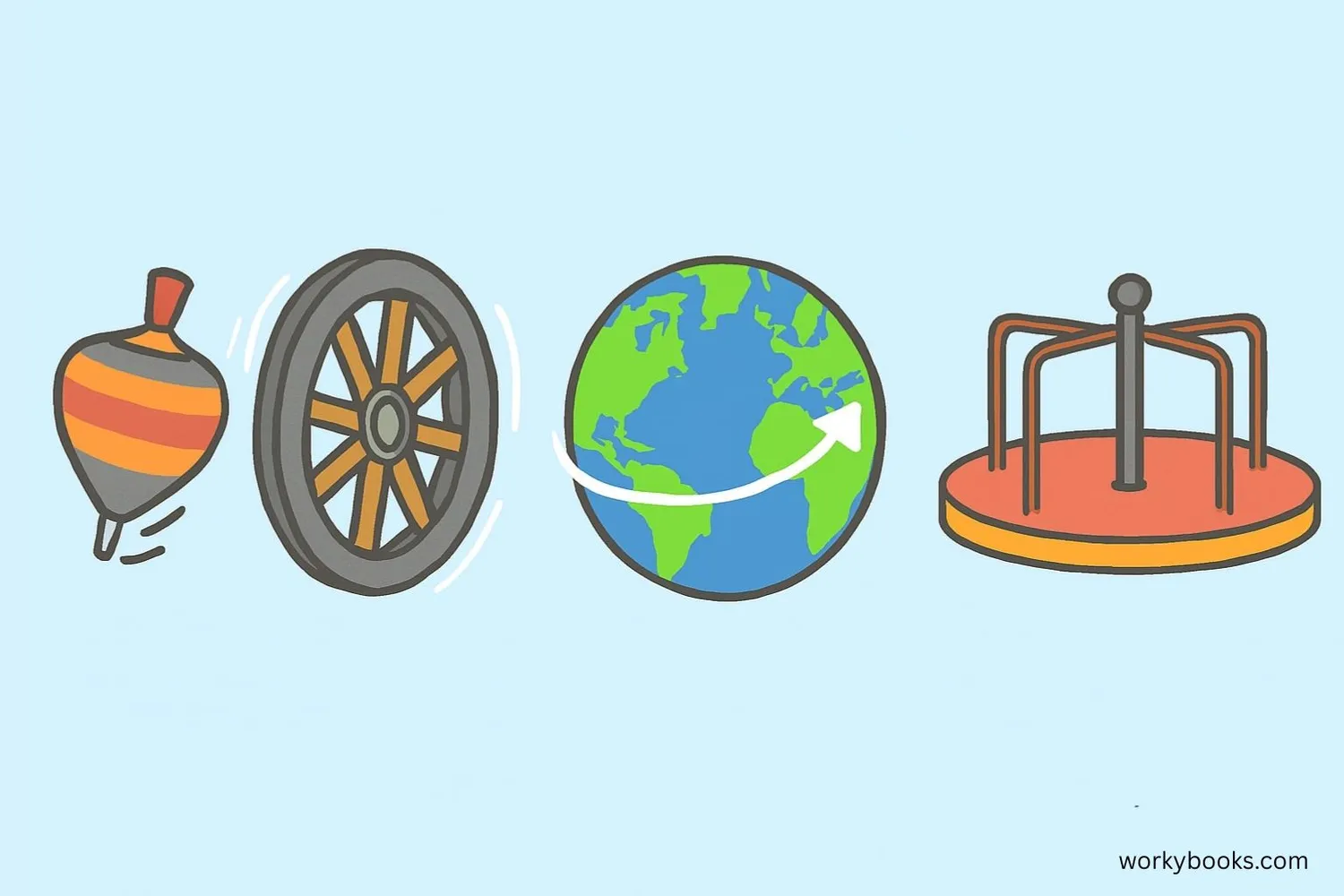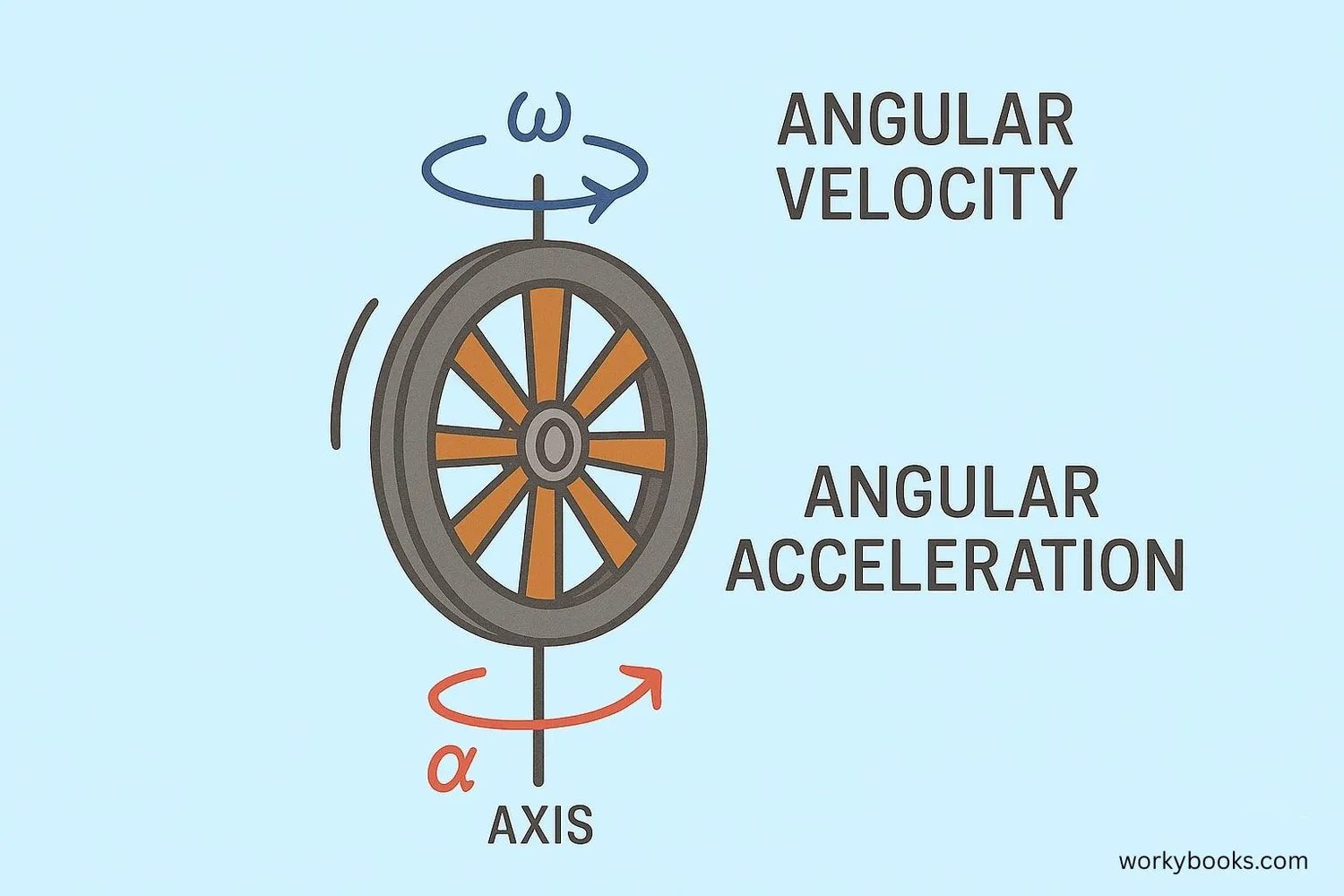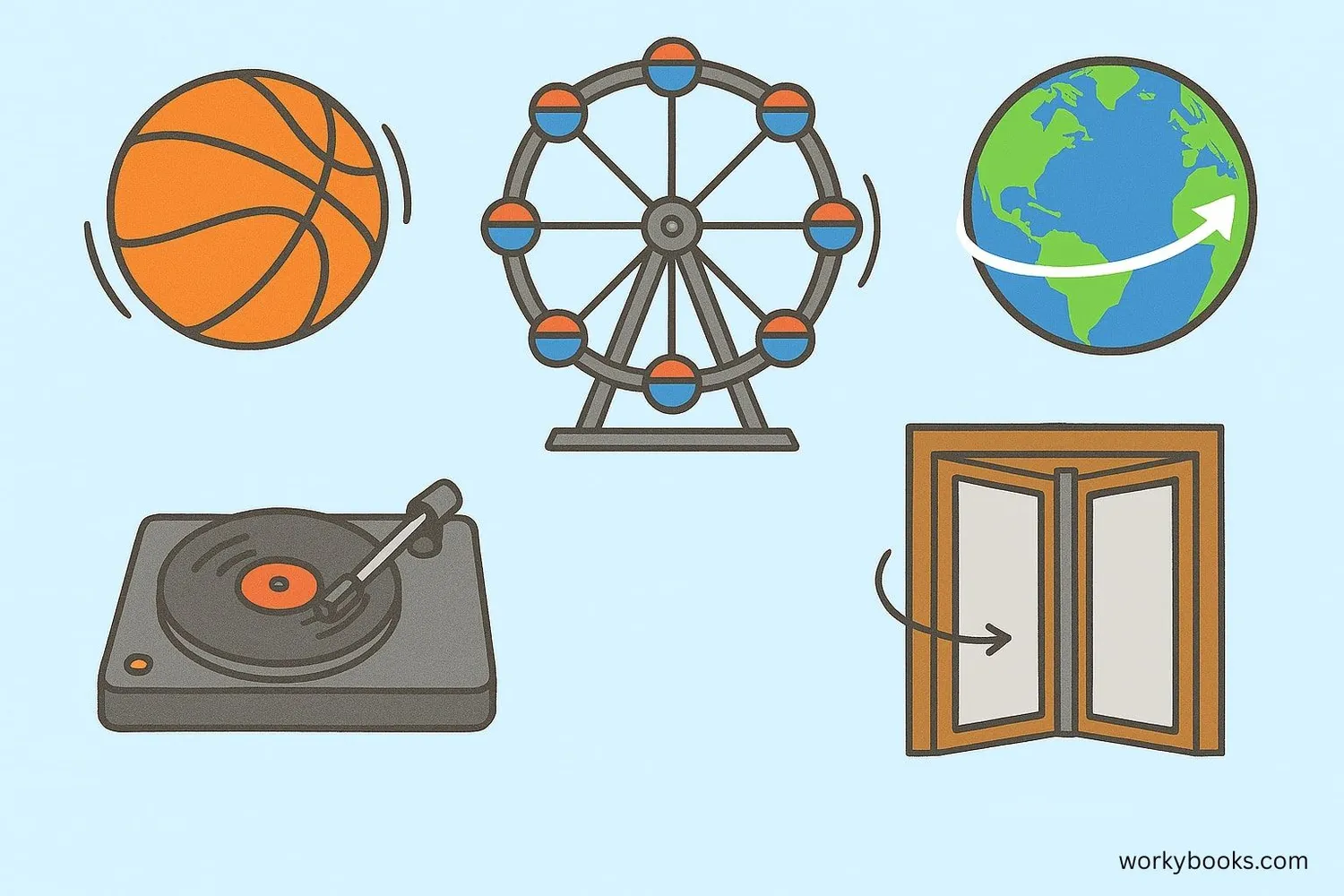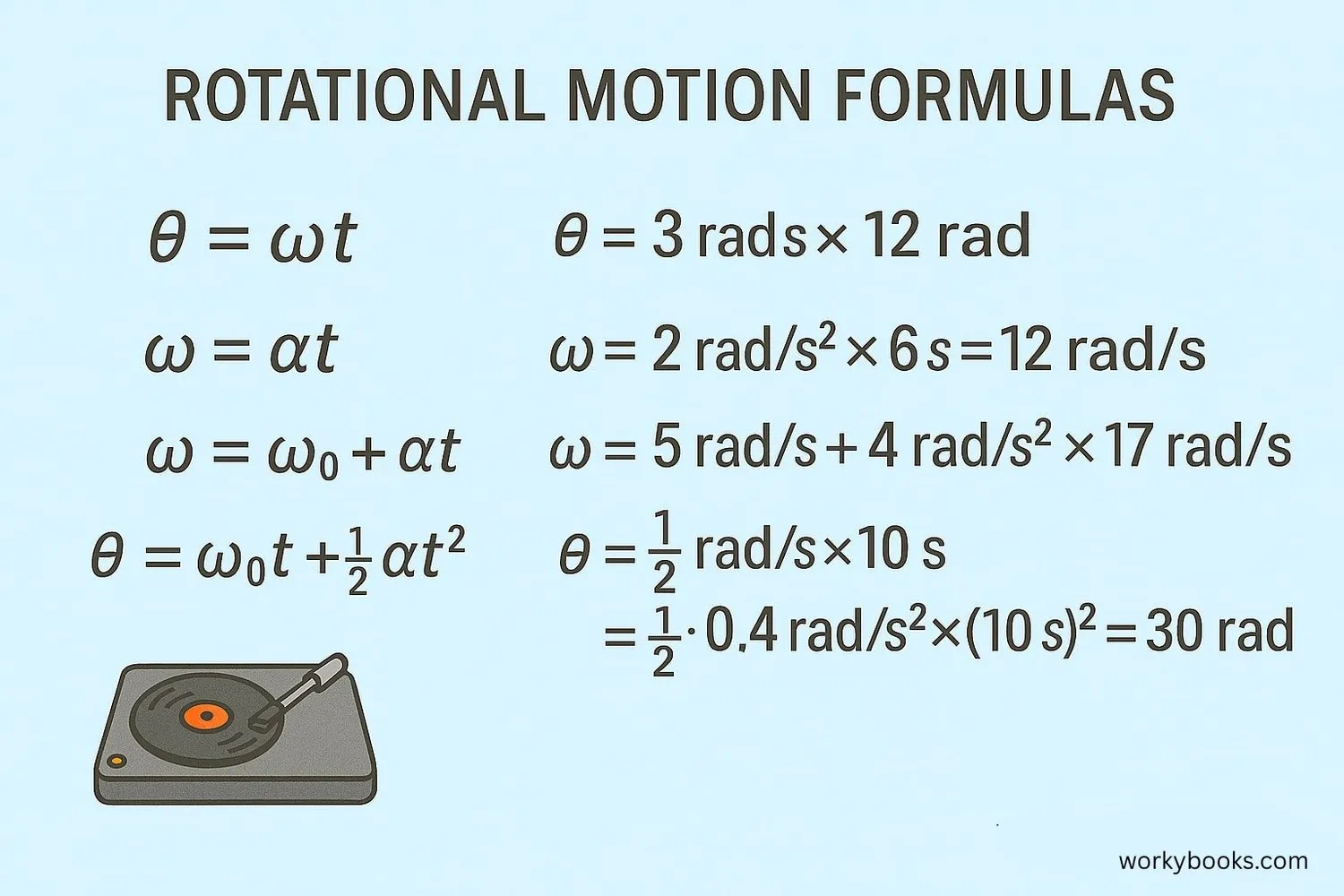Rotational Motion - Definition, Examples, Quiz, FAQ, Trivia
Discover how objects move in circles and spin around axes!
What is Rotational Motion?

Rotational motion is the movement of an object around a center point or axis. Unlike linear motion where objects move in a straight line, rotational motion involves objects spinning or turning around a fixed point.
Think of a bicycle wheel spinning, a merry-go-round at the playground, or Earth rotating on its axis - these are all examples of rotational motion. Every time something spins, rotates, or turns, it's demonstrating rotational motion!
Motion Fact!
Rotational motion is all around us! From the wheels on vehicles to the spinning of planets, rotation is a fundamental type of movement in our universe.
How Rotational Motion Works

Rotational motion involves several important concepts that help us understand how objects move in circles:
Axis of Rotation
The fixed point or line around which an object rotates
Angular Velocity
How fast an object is rotating (measured in radians per second or revolutions per minute)
Angular Acceleration
How quickly the rotation speed is changing (speeding up or slowing down)
Centripetal Force
The force that keeps objects moving in a circular path
These concepts work together to describe how objects move in rotational motion. For example, when you spin a top, you apply force to start the rotation (angular acceleration), it spins at a certain speed (angular velocity) around its center point (axis of rotation), and it stays upright due to forces acting on it.
Angular Measurement!
Scientists often measure rotation in radians instead of degrees. A full circle has 360 degrees or 2π radians (about 6.28 radians).
Rotational Motion Examples

Rotational motion is everywhere in our daily lives! Here are some common examples:
Wheels and Gears
Car wheels, bicycle wheels, and gears in machines all use rotational motion to convert energy into movement.
Spinning Objects
Fans, DVDs, hard drives, and record players all rotate to perform their functions.
Planetary Motion
Earth rotates on its axis (causing day and night) and revolves around the Sun (causing seasons).
Doors and Locks
Doors rotate on hinges, and keys rotate in locks to open them.
Sports Equipment
Basketballs spinning on a finger, footballs spiraling through the air, and gymnasts performing rotations.
These examples show how rotational motion is essential in transportation, technology, astronomy, and even sports!
Rotational Motion Formulas

While the mathematics of rotational motion can be complex, here are some basic formulas that help us understand and calculate rotational movement:
Where θ is the angle rotated (in radians) and t is time (in seconds). This tells us how fast something is rotating.
Where Δω is the change in angular velocity and t is time. This tells us how quickly the rotation is speeding up or slowing down.
Where m is mass, v is velocity, and r is radius. This is the force that keeps objects moving in a circular path.
Remember!
These formulas might look complicated, but they help scientists and engineers design everything from car engines to space stations!
Rotational Motion Quiz
Test your rotational motion knowledge with this quiz! Answer all 5 questions to see how much you've learned.
Frequently Asked Questions
Here are answers to some common questions about rotational motion:
Fun Rotational Motion Trivia
Discover some amazing facts about rotational motion!
Fast Spinners
Jupiter is the fastest spinning planet in our solar system, completing a rotation in just 9.9 hours! Despite its enormous size, this rapid rotation causes Jupiter to bulge at its equator.
Gyroscopes in Space
Spacecraft use gyroscopes (spinning wheels) to maintain orientation without using fuel. The International Space Station has four large gyroscopes that help keep it properly positioned.
Sports Science
In basketball, players put backspin on the ball when shooting because rotating balls tend to bounce more favorably off the rim and backboard, increasing the chance of scoring.
Nature's Flyers
Hummingbirds can rotate their wings in a full circle, allowing them to hover in place and even fly backwards—a unique ability in the bird world made possible by rotational motion.


